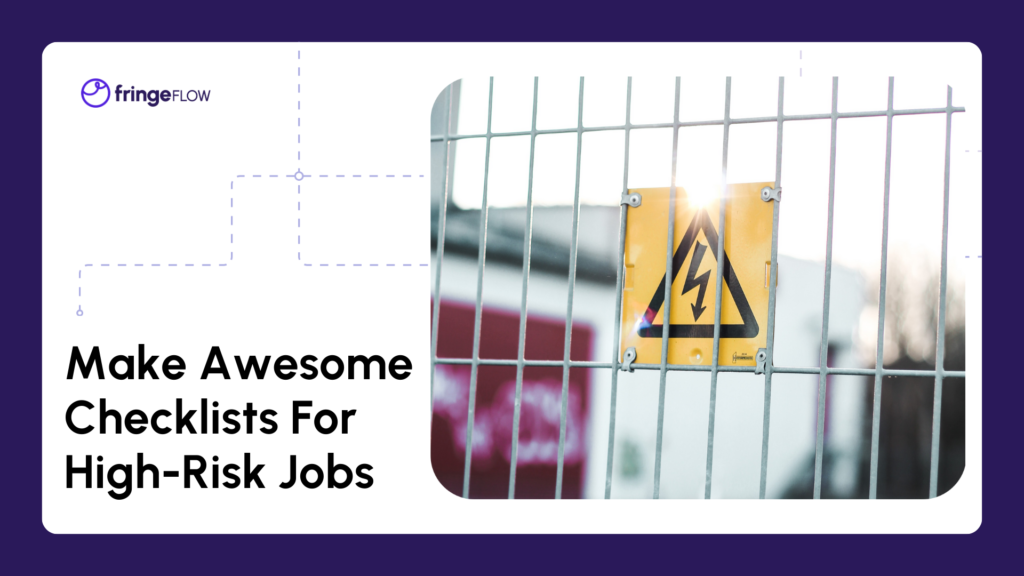Mastering Checklists for High-Risk Industries
If you work in an industry that involves high-risk situations, such as aviation, healthcare, construction, mining and nuclear power, you know how important checklists are. With a SOP software, you can create, manage and share all of your standard operating procedures easily. This way, you can do your job better, faster and safer. They can also help you avoid mistakes, communicate with your team and deal with stress.
But not all checklists are made equal. Some checklists may be too long, too vague, too complex or too rigid, and may make your job harder rather than easier.
In this article, we will share some tips and tricks for creating and using great checklists in high-risk industries. We will also explain some different types of checklists and how to review them.
Why Do You Need Checklists?
Checklists are useful for several reasons:
- They help you remember and follow the essential steps of a task or procedure, especially when they are complex, unfamiliar or infrequent.
- They help you avoid skipping or repeating steps, which can lead to mistakes, waste or accidents.
- They help you verify that you have completed the task correctly and document the results.
- They help you coordinate your actions with other team members and communicate your status and progress.
- They help you cope with stress, fatigue, distraction and interruptions, which can impair your performance and judgement.
What Makes a Checklist Awesome?
Your checklist should be:
- Safety driven: Keep yourself and others safe. Follow rules or standards as a bonus, not a must.
- User friendly: Easy to use, to the point and made by experts for experts. Match your workflow, language and expertise. Easy to access, read and update.
- Action oriented: Do tasks as actions. Think or judge only when needed. Have clear stop signals for each task.
- Precise: Not too long or too short. Cover all the relevant and critical steps, but skip the unnecessary or redundant ones. Use clear and specific language, avoid confusion or jargon.
- Flexible: Allow for some variation or adaptation depending on the situation or context. Don’t be too rigid or prescriptive, but provide guidance and support for your decision making.
- Dynamic: Review, test and improve your checklist regularly with feedback from you and others. Make changes easily.
What are the Types of Checklists?
There are three main types of checklists:
- Read-do: Read and do each item. Good for simple, routine or new tasks.
- Do-confirm: Do the task from memory and then check each item. Good for complex, frequent or known tasks.
- Memoir: Choose up to eight relevant items for the situation. Good for tasks that need awareness, judgement or creativity.
How to Review a Checklist?
Before using or implementing a checklist, it is important to review it to ensure that it meets the criteria of an awesome checklist. The following steps can help you with conducting a checklist review:
Section 1: What’s in your checklist?
- Type: Is it read-do, do-confirm or memoir?
- Title: Is it short and clear?
- Subtitle: Does it add more details?
- Pause point: Does each item have a clear stop signal?
- Data value: Does each item make data reusable?
- Safety: Are the critical items marked properly?
- Actions: Are the most common and important ones first?
- Metadata: Is there any extra information in each item?
Section 2: How is your checklist organized?
- Items: Are they clear, specific and actionable?
- Order: Are they logical, efficient and consistent?
- Number: Are they optimal, not too many or too few?
- Format: Is it easy to read, access and update?
Section 3: How does your checklist work for you?
- Needs: Does it match your needs, expectations and expertise?
- Feedback: Is it positive, negative or mixed? What are the strengths and weaknesses?
- Performance: Does it help you achieve the objectives, reduce errors, improve communication and enhance safety?
Conclusion
Checklists are great tools that can help you in high-risk industries do your job better, faster and safer. However, not all checklists are good. To create and use awesome checklists, it is important to follow some tips and tricks, such as making them safety driven, user friendly, action oriented, precise, flexible and dynamic. It is also important to review them regularly and make improvements based on feedback and results. Stay tuned for more if you want to learn more!
